The following information "The Mining Debate" is a chronology of events showing the protests by the Wavecrest community against sand/dune mining and destruction of forests and estuaries.
One must ask how long South Africans will have to fight against their own government for protection from mining magnates who come "bearing gifts" to bribe and cajole their way into the community before breaking it down? The very first "colonnials" to set foot in the third world were condemned for their tactics of coming with "beads and trinkets" to impress indigenous peoples so that they could make off with their gold and minerals. And yet South Africa's government is now welcoming these same unscrupulous mineral hunters with open arms.
East London does not want to become another industrialized Richards Bay with smelters pouring toxic emissions into air and water so that children have to be kept indoors. Nor does any town along the Wild Coast. Our nation is supposed to be able to market a healthy environment to tourists - not coastal towns belching fumes and deteriorating into industrial squalor.
The following information again shows that unfortunately those who want to strip South Africa of her natural resources follow a pattern - attempting to divide and conquer communities - that has been seen in St Lucia, Richards Bay, Wavecrest, East London, Coega, Tormin Sands and up the West Coast (oil industries). Most notedly, communities are tempted by greed or the idea that they will prosper alongside mining ventures - whereas history has shown this is not so and throughout Africa, the majority of the population remains impoverished while a very few at the top of the pyramid add to their stocks and shares.
Regards
Ingela Richardson
The MINING DEBATE
Related Pages: Ecological Threats and History
________________________________________
Wavecrest is an idyllic setting. The confluence of two rivers, uniting to form a pristine estuary with islands, wetlands and the most Southerly manifestation of Mangroves on the planet. Huge sand dunes separate magnificent indigenous forests from endless stretches of unspoilt beaches.
A contented local community continue their tribal existence, in harmony with their surroundings and blissfully separated from the crime and discord outside of their Utopia.
Wavecrest Hotel has a strong environmental ethic and has focused its facilities and activities to assist guests to fully appreciate the resources without destroying them.
Thousands of school children s lives have been changed by courses run by Wavecrest Eco-Ventures, where the emphasis is on the understanding of and love for the environment.
The scope of the planned mining is to include the entire area, from Sandy Point in the North, to 5kms South of Kobonqaba. The methods to be used are stripping and dredge mining.
The existence and value of the illuminate deposits in this area have been known for many years. Several mining houses have expressed interest and conducted studies into the viability and natural implications of exploiting the reserves. Each such study, those by Mr Keith Cooper, the president of the Wild Life and Environmental Society, in particular, has led to appreciation by the prospective mining initiative, of the catastrophic consequences of such an action. Each has decided to abandon the idea.
Regrettably prospecting rights to this reserve have now fallen into the hands of Iscor Heavy Minerals. IHM is a division of a quasi-government company, whose concerns would appear to be more for their inability to compete internationally due to our new labour legislation and their resulting need to prop up their ever deteriorating balance sheet, than for the future health of the planet.
Subsequent to the "Meeting on the mount", described in more detail in our History page, where the three effected communities unanimously rejected Iscor s advances and chased them away, "facilitators" have been employed, armed with extravagant promises, to mingle with and persuade certain key figures in the community. Notwithstanding some limited success, the vast majority of the effected communities remain radically opposed to mining.
Departing from normal procedures followed in the implementation of a mining operation, a committee, called CIMEC has been commissioned by Government to examine all matters related to so called land use in the "Centani area". There will never be mining anywhere near Centani, the brief in itself reflects deceit.
The Steering Committee of CIMEC is reported to comprise representatives of all interested and affected parties. It is apparent however that it comprises mainly Iscor representatives, or known supporters of their cause. Those members who by virtue of the organisations they would appear to represent, should oppose mining, each received a letter requesting clarity as to who they represent and what stand they intend taking. With the exception of the WESSA representative, we did not even receive the courtesy of an acknowledgment of receipt.
Conspicuously absent from the Steering Committee are representatives of the Dept Water Affairs and Forestry, who own the land, the communities who live on the land, and Wavecrest, the only employer in the area and leaseholder over substantial areas to be mined. Could this be because all these parties have already expressed their opposition?
It is our fear that it is too easy for present officialdom to make decisions which are at best based on short term political expediency, or at worst possibly motivated by influences more sinister, at the expense of the health of the planet and the welfare of it s populace, forever.
The environments most threatened by mining are :
The Coastal Dune Forests, considered by experts as some of the finest examples in S A. ( Not plantations as in the case of St Lucia, but indigenous trees hundreds of years old)
The Wet lands surrounding the estuary:
A Living, Productive Estuary. It is regrettably to complicated to detail in this exercise, the mechanism of an estuary, the intricate food chains, and the inter-relationship with other environments. Even more importantly, by virtue of their dependence on estuaries, the life of the oceans and ultimately man.
What makes the estuary at Wavecrest unique:
A quirk in the ocean currents, which causes the clear, warm Agulhas current to flow into the Nxaxo and Kobonqaba estuaries. The resulting mangroves, the most Southerly manifestation on the planet, and the influence on the detrital effect, which drives the many food chains.
The Effects that Mining will have:
The forest would need to be stripped completely. Any reconstruction, if it indeed ever happened, would take hundreds of years before anything resembling the existing could be achieved. Once degraded, justification of further ill-conceived developments in the future, becomes easy.
The many rare and in some cases even unique bird, animal, and butterfly species would disappear, probably forever.
The success of the Coastal Dune forest is dependant on an inter-relationship of many different dynamics.
The protection from the sea by the sand dunes. Dunes evolve, they cannot be re-constructed.
Failure to recreate the dunes to the exact height and shape, would affect the wind patterns and therefore the possibility of recreating a forest.
It is impossible to recreate the delicate mechanisms, which control the water table, upon which the forest is dependant.
The mangroves from the estuary side and various pioneer species from the grasslands, forming a shield to shelter the canopy trees, most of which cannot exist outside the protection of the canopy itself.
ALL THIS CANNOT BE ARTIFICICIALLY REPLACED, AS IS THE CASE OF INLAND FORESTS OR PLANTATIONS.
Of far more concern than the destruction of the forest will be the loss of the estuary.
An estuary is essentially the tidal flow of the sea in and out of a river mouth. It is the interface of sea and land, where the two environments come together and are mutually dependant.
Quite apart from the many species which use an estuary as a nursery, by virtue of the number of food chains which have their origin there, virtually all life in our oceans is dependant one way or another on a healthy working estuary.
Regrettably these systems are terribly fragile. Once destroyed, there is little chance of ever recreating them.
As our coastline has been developed, we have systematically destroyed the majority of our estuaries. In fact we re rapidly running out of good, healthy, working estuaries.
By virtue of the fact that the previous Transkei was always a Cinderella province, the coastline was mercifully spared. This accounts for the wealth of these healthy estuaries still surviving on the Wildcoast.
It is a fascinating study of the significance of the mangrove trees, how and why they developed their aerial root system, (pneumatafores) and why these pneumatafores are essential to detritus and therefore life itself.
An estuary is dependant on the intertidal flow. In order for these pneumatafors to perform their primary function, that of photosynthesis, they need to spend a significant portion of their day, dry and exposed to sunlight.
In order for them to contribute to the ditretal influence, they must likewise be submerged. If that intertidal fluctuation is disturbed, the system dies.
Dredge mining requires an abundance of fresh water for separation and transportation. The only available source would be the damming of one of the rivers. As each in the system has a very small catchment area, the entire system will need to be effected.
Such a dam will destroy the intertidal range, kill off the mangroves, cause the mouth to block up, and yet another estuary will be lost forever.
In our opinion, for reasons previously explained, probably the most unique, productive and beautiful estuary on our coastline.
The effects to the local community:
The community surrounding Wavecrest comprise predominantly the elderly and their grandchildren, sent home to granny whilst their mothers work in the cities.
It is a peaceful community, living in perfect harmony with their surroundings. They are certainly not wealthy, but are lucky enough to enjoy an abundance of tribal land in one of the best agricultural zones in the country. Good grazing for their cattle and goats and subsistence farming , supplemented by pensions result in a lifestyle which is a far cry from the poverty suffered elsewhere.
The social order is administered by a congregation of elders who meet weekly, as they have done for generations, to address the occasional matters of community interest which may arise.
They are content, and in may ways blessed by being cut off from the strife in the cities.
Mining will create no more jobs than what the present tourist industry supports.
It functions utilising large specialised plant, with highly trained operators. Not operators who could be locally employed.
There will however be a massive influx of hopefuls who will descend upon the area. Squatter camps, aids and crime will arrive with them and the peaceful social structure of the community, lost forever.
The largest and fastest growing industry on earth is tourism. The Wildcoast is perfectly poised to benefit in many ways from this potential.
At this stage Wavecrest remains largely undiscovered. When the myths of perceived dangers are finally dispelled and when the public finally wake up to the incredible holiday potential of the Wild Coast. Free of Malaria. Warm seas, magnificent coastlines and excellent, very reasonably priced hotels, there will be a flood in our direction. Employment opportunities will increase in the many different spin-offs and directions.
Mining and tourism cannot co-exist in this magnificent area. It is a choice, one or the other. Tourist don t need to come all the way to Wavecrest to see the destruction of an environment.
In my opinion, Wavecrest is certainly the most unique, if not the most beautiful. If mining is allowed to continue, The Iscor shareholders may be enriched for a while, as will possibly some officials, but this opportunity will be lost forever. . . To the industry, to the community, and to the Country.
These are hard economic considerations. Even they should not be allowed to take weight from the overwhelming argument . . .
No-one, no official, no presently empowered Government, has the right to make decisions which will ultimately leave the planet poorer for future generations.
We did not inherit the earth from our parents, We are it s custodians for our children.
The alternatives to mining, to uplift this area are obvious.
The tourist potential is incredible. If this industry could only receive the most basic assistance from Government, in the form of improved access, communications, perceived security, and above all, a Tourist Publicity Association such as that in Durban or Cape tours, which actually promoted the area, huge development and employment opportunities are available.
The Wildcoast has without doubt, the most fertile Agricultural land in the Country. It however contributes zero income to the inhabitants or the State. The most primitive subsistence mielie fields are found in small pockets. The balance of the land is grazed, or overgrazed by tick and disease infested cattle which are kept only as a status symbol. They are not marketed, and seldom even eaten.
Capable agricultural extension officers are desperately needed to train the population to exploit the potential wealth they could be enjoying if this land was effectively utilised.
To Summarise
If mining goes ahead:
Only the mining company and their supporters will benefit.
This unique system will be lost forever.
Squatter camps and crime will replace the present peaceful existence of community.
Tourism opportunity will be lost forever.
Agricultural potential will be compromised.
Most importantly, the area will be impoverished forever. Life at sea will be further reduced and one more step will be taken towards the destruction of the planet.
________________________________________
Update: 15 July 2000
The CES Strategic Assessment of Resource Use Options at Wavecrest has just been released. It can be viewed on http://www.cimec.co.za/. Our response can be viewed by clicking here.
The public have been invited to comment by 30 July. If you do so, please let us have a copy.
________________________________________
Update: 15 September 2000
Many thanks for the many comments received, together with copies of your responses to the Strategic Environment Assessment (SEA) by CES The support for Wavecrest in the face of the personal attack in the SEA on Conrad in particular, is most appreciated.
It is hoped that whereas the majority of the original submissions were ignored in the SEA, that the responses at least will be published.
So far, nothing further from CES. Disturbing reports are however being received from friends amongst our local community, of increased activity by strangers to the area. Extravagant promises of lucrative jobs are being made to the more influential or vocal elders and civil disobedience is being advocated. Conrad has been earmarked as the obstacle to the wealth which mining will bring. Once again an innocent population is being used as pawns in the power game. Has the Zimbabwean type of war veteran scenario reached SA.
________________________________________
Update: 1 October 2000
Surprise, Surprise. A Comments Report has now been published by CES. What makes it surprising is that it would appear to include all the responses and that these comments have been honestly described as detailed and informed. It points out that with the exception of the Iscor response, all the rest condemned the mining option B.
We were disappointed by the rather weak excuses made by CES to the many criticisms received and to there fobbing off of highly pertinent issues raised. We do however welcome the transparency in at least this phase of the investigation. What has become evident is that Iscor, CIMEC, CES and their supporters in authority, now have an idea of the extent and strength of the opposition to their intentions.
The report acknowledges under Recommendations that at least seven fundamental prerequisites still remain, prior to the formulation of their guidelines. We believe that there are many more but are confident that if these are responsibly adhered to, then the favoured option A, abandoning the mining prospect, will dictate the future of our beautiful coastline.
So much for the almost honest battlefield. Regrettably the clandestine assault continues. It is significant that before the first sod of soil is turned, the damage caused by mining has already begun. We have a community, now divided. Threats and angry words between those corrupted by vague promises and personal greed clash with those determined to preserve their peaceful heritage.
The division of our communities are only one visible effect of damage already done. Our own development program is most certainly on hold until we have more confidence in our future. How much more so are the funders of the many planned development projects in the area effected. Those that can indeed bring much needed sustainable prosperity?
________________________________________
Update: 20 January 2001
Many, many thanks for all the support and offers of assistance. No we don t need, or want financial help. Yes we do want e-mails from as many contributors as possible. Contributions can be in respect of inside information, influence over involved commercial or state organisations, or simply a well written letter to a magazine, radio or television program.
Remember, our greatest strength is our database of friends who believe in what we stand for.
The latest news is - notwithstanding the undertaking to make an announcement by November 2000, the silence remains. The harm done by the indecision continues and uncertainty prevails.
We do however have cause for optimism. Information flowing from our various supporters would heavily support the contention that the value of Wavecrest to Iscor is purely a balance sheet pirouette and that there is no intention to actually ever mine.
Iscor is a new and very small player in the heavy mineral market. They are yet to produce their first gram of product and have given no indication that they possess the very complicated technical know-how to succeed.
The Saldanha development was touted as a huge potential money spinner. It was this hype which Iscor relied on to promote the sale of their shares to the public. Saldanha has failed miserably and enormous losses are accruing. The Iscor share value continues to disappoint.
It must be remembered that our Government have a number of other corporations, worth billions of Rands, all planned for privatisation. Denel, Telkom, Eskom, SATS, SAA, the list goes on and on. It was the success of Sasol, on an ever increasing oil price, which realised the success of the Iscor listing. Unless Iscor can be propped up, even in the short term, even artificially, the investing public will remain unimpressed.
Saldanha has lost it s credibility. Therefore Iscor s new Eldorado is their Mineral Sands Project, Gravelotte, Hillendale and then, for continuity, Wavecrest deposits. The good news, word from the main financial investment groups is that they are neither convinced nor impressed. If the charade fails, can it continue?
Reports are now reaching us of the introduction of a new player into the arena. Ticor Ltd., an Australian registered company, itself partly owned by Iscor, is reported to be negotiating an interest in the Mineral Sand Project. It has always been of major concern that lacking the funds to exploit the reserve themselves, and having alienated the IDC, their main financial backer, that the opportunity could be sold off to an unscrupulous outsider. The choice of an Australian based company, who are at least environmentally sympathetic in their domestic operations, is also positive. We have excellent influence within the Australian media and will not hesitate to use it to embarrass Ticor, should they support the destruction of Wavecrest.
________________________________________
Update : 10 February 2001
Many thanks for the flow of information from our database. Sorry it is necessary to keep tactics and some trump cards rather close to the chest.
It would appear that as predicted, Iscor is about to be unbundled. Iscor Steel in one direction, the old Iscor, housing the mining assets, in the other. It is most likely that these mining assets, including Iscor Heavy Minerals, will then become fair game, for sale to whoever wants them. The excitement surrounding the Wavecrest mineral reserves, is apparently not shared by anyone outside of the Iscor team. Who else could simply ignore the enormous environmental impact?
It s still early days but we remain optimistic that the project will be downscaled or abandoned, once all the environmental influences are considered.
________________________________________
Update: 1 June 2001
The silence broken at last. Correspondence from the office of the Premier of the Eastern Cape was recently addressed to the Cimec Steering Committee.
This correspondence states that the Government is not opposed to IHM Heavy Minerals (Pty) Ltd proceeding with their evaluation of the mining option. They continue to detail 7 guidelines as fundamental prerequisites.
Once all of the politically correct padding is discarded, we are left with the following significant prerequisites :
C) The issue of water abstraction must be investigated further, particularly with respect to the amount of water required and the ecological effects this could have on the Nxaxo and Kobonqaba estuaries.
Having regard to the massive amounts of water utilised by the mining methods employed and the minimal riverine flow of the three rivers feeding the two estuaries, this prerequisite, together with the guidelines set out in the Constitution for water utilisation, is in itself fatal to the mining option.
D) The Nxaxa estuary and forested areas of Nxaxo (Sandy Point) must be excluded from any form of mining and the indigenous forests in the Kobonqaba and Kabakeya must be afforded maximum protection.
It is simply impossible to mine any part of the area included in the prospecting permit, without devastatingly affecting all of these systems.
Under normal circumstances, we would declare victory and start celebrating the end of the mining threat. Regrettably we live in Africa and anything can still happen.
________________________________________
Update: 5 September 2001
The dust is now beginning to settle, Iscor is indeed effectively unbundled, the mining activities now in the hands of Ticor. The status of Ticor mineral sand development is such that the mining in Natal has commenced with the Hillandale deposit, to be followed by that at Fairbreezes.
An announcement is expected soon, giving the go-ahead for a smelting plant in the area. The estimated life of the Natal reserves are 22 years.
Options available to Ticor thereafter are as follows :
Exploitation of the Gravelot deposit. This is environmentally less sensitive, however a hard-rock deposit is more expensive to mine than sands.
Wavecrest remains under threat. Mining companies will never give up an option, no matter how unlikely the ultimate successful utilisation may be. Purchase of sands from the Mozambique deposits owned by their fellow Australian group, Western Mining Company.
There are reputedly huge reserves in this area, having a life span in excess of 100 years.
An awful lot can happen in 20 years, particularly in the political arena, where the ultimate decisions will be made. The high road could be a responsible government, where as in the case of most first world counties, value is placed on the preservation of the environment. We don't have to look too far however, to have a preview of the alternative. Mining could be the least of our problems.
We must remain vigilant. Every move must be monitored. The voice of sanity must continue to be heard and recorded in every study and every report.
________________________________________
Update: 12 September 2001
A meeting was called on 11 September, at the tribal kraal of Chiefteness Nogolde. Of the Nombanjana community. Conrad Winterbach was invited to attend.
The convener was Prince Sigawu of the Xhosa Royal Council, the purpose was to introduce the Company Steven Keet and Associates to the community.
It was explained that SKA was appointed by Tycor in compliance with one of the conditions to be satisfied prior to the commencement of the EIA.
Mr Keet was very professional and went to lengths to explain that the land to be mined belonged to that community. It would not be mined should the community not so wish. It was the task of his company to hear their voices and report back to Tycor and Government. He asked for individual reactions together with specific reasons, should there be opposition to mining.
The very large crowd responded instantly and with total unity. Every single one of the countless reactions condemned the prospect of mining and listed many environmental, social and practical reasons related to the survival of their community. This response was clearly unexpected, and whilst Mr Keet remained silent, his associates ignored Mr Keet's assurance that they were impartial and not required to influence opinion.
Heated and at times confrontational debate followed, until the Prince himself became involved. He delivered an aggressive assault on Conrad, accusing him of having misled the community. Mining would mean the confiscation of his hotel. His actions were therefore selfish and not in the interests of the people. He knew that Conrad had showed them videos. He would do better. He would take a delegation to Richards Bay to see the mining for themselves.
Whilst it was not Conrad's intention to get involved, this outburst demanded a response.
The following were the points made:
S.A. had not yet become Zimbabwe. Wavecrest cannot simply be confiscated. Should expropriation become necessary, then fair compensation is prescribed by law.
It was an insult to the community to presume that Conrad is able to exert such an influence. The people of Nombanjane have been fighting mining long before Conrad appeared on the scene. Conrad had come in their support, not they in his.
Richards Bay is not Wavecrest. Richards Bay Mining were the very first company to be offered the mineral rights at Wavecrest, by Rhombus. They had done a study, determined the sensitivity of the area, and turned it down. Similar studies were done by other responsible mining companies, including Rand Mines, Anglo American and Shell. All came to the same conclusion. We really don't need another study.
The volume and duration of the spontaneous applause from the community, to this speech caused the abrupt closing of the meeting.
We remain of the opinion that Mining is highly unlikely at Wavecrest. The posturing will however continue. We will continue to be vigilant.
Prince Xhianti Sigawu ended his speech by publicly declaring that in order to destroy a building one must seek out and destroy the pillars that support it. In doing so he pointed to two pillars, one being a Mr Z. Kekana, who was the initiator of the anti-mining campaign, and the other being Conrad Winterbach.
________________________________________
Update: 1 November 2001
It has come to our attention that the suggested "pony show" indeed took place. A luxury bus arrived at Nombanjana and several prominent members of the community were spirited away for a week at Richards Bay. Included in the party were those traditionally strongly apposed to the mining option, including one Gustav Wayini who had led the opposition. Upon their return, all members of the party appeared blatantly prosperous. Wayini for example purchased a motor car, sported a cell phone and adopted an extremely affluent profile, despite the fact that he remained unemployed. Co-incidentally, he immediately became nominated as a councillor, a privilege previously reserved for members of the pro-mining lobby. Leadership of the anti-mining group has now been assumed by Kekana.
________________________________________
Update: 12 January 2002
Correspondence has been received from an organisation calling itself "Kobenjaba Peasants Association" and signed by a Mr Bali. An interesting point included is the accusation that Mr Kekana had been murdered at Wayini's house.
Even if Mr Kekana's death was purely accidental, it was very fortuitous for the mining lobby and furthermore, half of Prince Sigawu's prophecy had come about.
As a backdrop to the above events it should be bourn in mind that there are serious political undercurrents at this level of society. The authority of the traditional leaders is under threat.
The powers of the chiefs and their advisors are now being removed and placed into the hands of so-called counsellors. These counsellors are not democratically elected by the community but unilaterally appointed by the local office of the ruling party. The appointees are always those who support the interest of officials of that office. The powers of these counsellors are particularly effective in that any contractor wishing to operate in the area is required to channel his labour requirements through the counsellor. In this way it is ensured that the members of the community either bow to the interests of the local ruling political party, or remain unemployed.
________________________________________
Update: 20 June 2002
Everything is very quiet, we regard this as a dangerous sign and are most vigilant when proceedings appear to have gone underground.
________________________________________
Update: 1 June 2003
Still nothing said. Drilling rigs have however been seen in the area. The only hole to be monitored was some distance away in the Takazi district. This is nowhere near that area included in the prospecting rights now held by Ticor.
We understand that it has come to pass that an empowerment group called Kumba Resources now owns 60% of the Ticor South Africa operations. Kumba Resources was apparently born out of the remnants of Iscor Heavy Minerals during the unbundling of Iscor Corporation.
________________________________________
Update: 8 July 2003
We've received a visit from a secret government department of which we had never heard before. The full content of discussions may not be divulged. If what we were told is in fact true, then there is still considerable activity now underground. That activity does not however enjoy the support of all the Government departments? We have been strongly advised to play no further public role, and this chronicle will accordingly be more circumspect. Very much to the dissatisfaction of the Department Mineral affairs and Energy, details of the proposed mining activities both at Wavecrest and further to our North are however being openly publicised in the mining companies' websites.
________________________________________
Update: June 2004
All continues to be quite, but we remain vigilant. We are watching the developments on the N2 extension and the arguments over the Pondoland proposed mining with interest, without getting directly involved. Cathy Kay and WESSA's efforts however, have our support.
We note Mr "Kortbroek" van Sckalkwyk's lament in the Mail & Gardian, that he is unable to stop Sand mining, and question who in fact does have such authority, if not the minister of Environmental Affairs and Tourism.
We regard it as an indictment that short term political expedience, and personal profit should take priority over the environment and long term well being of the region.
http://www.environment.co.za/topic.asp?TOPIC_ID=579
...
Read more
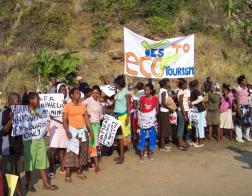
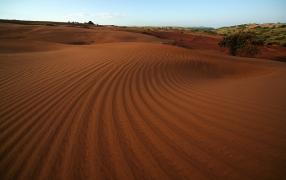
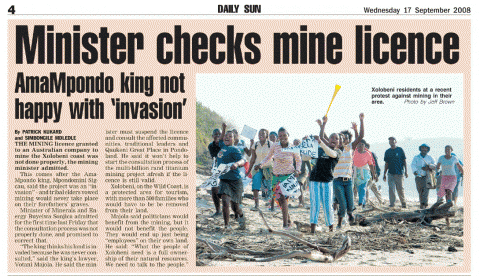
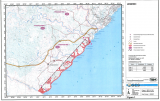 datya communities, the Khimbili Property Association and residents in the amaDiba tribal authority.
datya communities, the Khimbili Property Association and residents in the amaDiba tribal authority.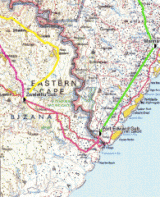 cessing of the application.
cessing of the application.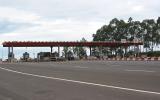 Bishop Geoff Davies - 6 May 2010
Bishop Geoff Davies - 6 May 2010 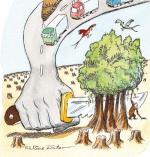 A recent parliamentary response to questions about the N2 Toll Road, posed to the Minister of Transport, shows the government has a deeply flawed understanding of the broader issues surrounding the N2 Toll road debacle. The Minister’s response suggests a government that is stuck in an inflexible time warp, basing its decisions on outdated, vastly flawed and unsustainable development projects that were conceived of in the early 90's, under scenarios vastly different from the situation that prevails today.
A recent parliamentary response to questions about the N2 Toll Road, posed to the Minister of Transport, shows the government has a deeply flawed understanding of the broader issues surrounding the N2 Toll road debacle. The Minister’s response suggests a government that is stuck in an inflexible time warp, basing its decisions on outdated, vastly flawed and unsustainable development projects that were conceived of in the early 90's, under scenarios vastly different from the situation that prevails today.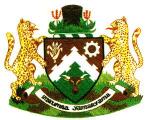 2 October 2009
2 October 2009 If you want to explore the threatened area from Mzamba to Xolobeni, passing the Cretaceous Deposits and Petrified Forest at Mzamba River, Benny the Tour Guide can be contacted on 079-1985 975 / or through Sonya on 074-336 7862 - for a guided day-trip.
If you want to explore the threatened area from Mzamba to Xolobeni, passing the Cretaceous Deposits and Petrified Forest at Mzamba River, Benny the Tour Guide can be contacted on 079-1985 975 / or through Sonya on 074-336 7862 - for a guided day-trip.